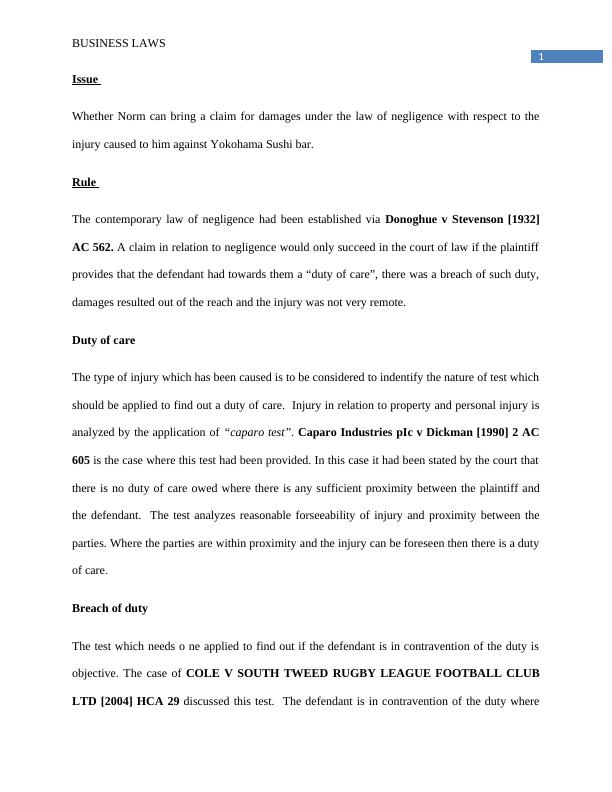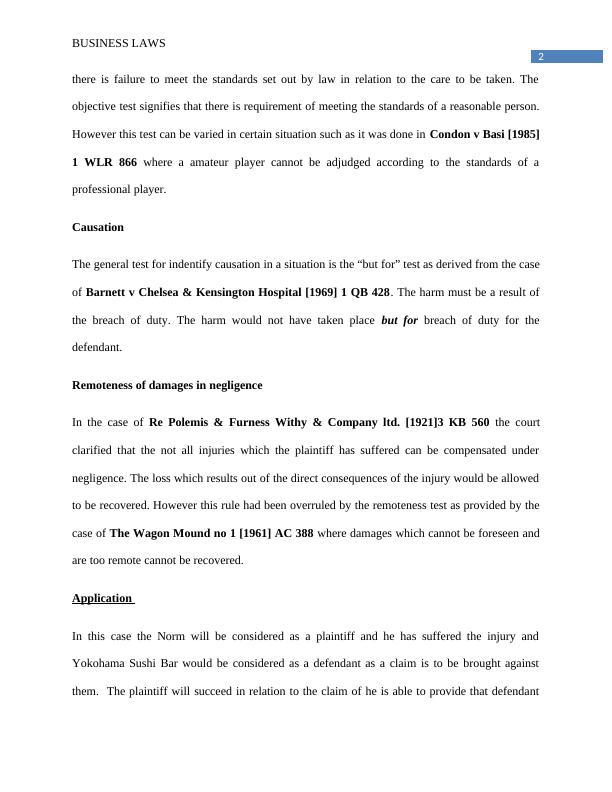Ask a question from expert
Business Laws Solution Assignment
8 Pages1777 Words56 Views
Added on 2021-05-31
Business Laws Solution Assignment
Added on 2021-05-31
BookmarkShareRelated Documents
End of preview
Want to access all the pages? Upload your documents or become a member.
Assignment on Commercial Laws
|6
|1395
|79
Case Study Analysis
|11
|2237
|188
Business Law: Negligence and Ethical Decision Making
|12
|2896
|243
Commercial Law Issues - Assignment
|13
|2932
|18
Commercial Law BULAW5914 | Assignment
|14
|3553
|99
COMMERCIAL LAW 10 Running Head: Commercial Law
|12
|2918
|71


